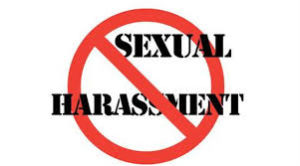Recent sexual harassment scandals mean all businesses should be reviewing their own policies
By now everyone knows about the recent sexual harassment scandals involving prominent politicians, celebrities, and business people. As we have seen from examples involving the movie industry’s Harvey Weinstein and Fox News’ Roger Ailes and Bill O’Reilly, sexual harassment can have a serious negative impact on a company’s reputation and bottom line and can cost even high-level executives their jobs.
Companies everywhere should view the recent focus on workplace harassment as an opportunity to review their own policies and practices, to make sure they are compliant with current law, are structured to address a harassment complaint in a serious manner and provide effective training and education for employees at every level of the company. This article will give an overview of how sexual harassment in the workplace is defined, and the penalties for allowing it to occur. In our next article, we will outline steps any organization can take to prevent sexual harassment and effectively address it should an employee claim to have been harassed.
The 1964 federal Civil Rights Act prohibits discrimination based on sex, and since then courts have ruled that sexual harassment is a form of discrimination. The U.S. Equal Employment Opportunity Commission (EEOC) defines two categories of illegal sexual harassment:
- Quid pro quo: quid pro quo is a Latin phrase that means “something for something.” In the area of sexual harassment, it applies to when someone with the authority to make employment decisions such as hiring, firing, promotions, etc., bases such a decision on receiving some manner of sexual favor from the person affected by the decision.
- Hostile work environment: when sexual harassment, whether verbal, physical, visual, or otherwise, and is “severe or pervasive enough to alter the conditions of the victim’s employment and create an abusive working environment”, according to EEOC guidance.
Many of the recent high-profile cases in the news involved blatant quid pro quo harassment, but cases of hostile work environments are also common. Note also that not just employees can be guilty of sexual harassment. If a company’s customers, vendors, and contractors harass an employee, and the company has not taken steps to address the actions, the company can still be held liable.
Penalties for sexual harassment claims
If an employer is found liable for sexual harassment, it can face the following penalties:
- Lost wages from the date of harassment to the judgment in the case
- Reinstatement to position
- Future lost wages that the harassed employee would have earned absent the harassment
- Other compensatory damages
- Punitive damages, to deter future harassment
- Attorney fees and costs
Cases often result in a settlement, either with the plaintiff who brought a suit, or the EEOC, which can also take action against an employer. In a recent case, the EEOC settled claims covering a seven-year period against GEO Group, Inc., a private operator of prisons and detention centers, for $500,000. In November 2017, the EEOC settled cases against Trans Ocean Seafoods, a Washington state company, for $75,000 after female employees claimed a hostile work environment. The company also agreed to implement new policies, conduct extensive training for employees and management, post an anti-discrimination notice at the workplace, and report compliance to the EEOC for a two-year period.
These are just two examples of sexual harassment cases and the significant consequences and costs to employers who fail to protect employees. Insurance companies offer policies known as employment practices liability insurance, or EPLI, but those policies may not cover all of the costs and consequences of a successful sexual harassment claim.
Despite recent high-profile cases involving Fox News, Harvey Weinstein’s Miramax and others, all reputable employers want their employees to feel safe at work, free from harassment, insults, or toxic actions.
In my next post I will discuss the steps every company, no matter how many employees it has, should take to prevent sexual harassment from occurring, and to deal with it if it does occur.
If you have any questions, call me at 720-575-0440 or email me at mark@spitzlegalcounsel.com.

